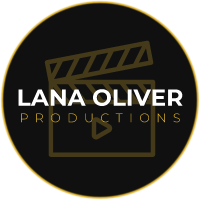There’s more to creating impactful videos than just hitting record. Before you start filming, you need clear and focused goals that guide your content and measure success. Defining what you want to achieve—whether it’s building brand awareness, increasing engagement, driving conversions, or improving retention—will shape every aspect of your video strategy. By setting SMART goals, you ensure your efforts align with your business objectives and deliver meaningful results. In this post, you’ll learn how to establish smarter video goals that set you up for success from the very beginning.
The Pivotal Role of Clear Objectives in Video Production
Clear objectives act as the foundation of every successful video project. Without a defined goal, your video risks becoming a generic piece of content that struggles to engage or convert your audience. By setting explicit targets, whether it’s to boost brand awareness or drive customer retention, you create a roadmap that guides every aspect of production. Videos with concrete objectives consistently perform better because they align with both your business needs and audience expectations, leading to measurable results such as increased sign-ups or higher engagement rates.
Connecting your objectives to specific metrics ensures that your efforts don’t go unnoticed. For example, a video aimed at increasing conversions could focus on testimonials with a clear call-to-action, and success might be measured by tracking the number of leads generated within a given timeframe. This level of precision transforms your video from a creative experiment into a strategic asset that directly supports your marketing goals.
Defining the Purpose: Why Every Video Needs a Goal
Each video you produce should answer the question: What outcome am I aiming for? Without this answer, your video risks losing focus and failing to resonate with viewers. For instance, a video designed to generate brand awareness can take a storytelling approach that highlights your company’s values and identity. On the other hand, an engagement-driven video might prioritize interactive elements or behind-the-scenes footage that invites viewer participation and conversation.
Setting a clear purpose also means selecting the right format and style that appeals to your target audience. A testimonial video meant for driving conversions would naturally differ from an educational FAQ video intended to improve customer retention. When the goal is defined upfront, it prevents wasted resources and keeps the creative team aligned on delivering a message that supports your business’s desired action.
The Impact of Objectives on Creative Choices
Your video’s goal deeply influences every creative decision, from scriptwriting to visual style. If your objective is engagement, incorporating candid moments or informal storytelling sets a tone that feels approachable and relatable. Conversely, a video focused on conversions might lean on polished visuals and persuasive language that builds trust quickly, encouraging viewers to take immediate action. This clarity saves time by filtering out unnecessary elements and shaping content that speaks directly to the intended outcome.
Targeting retention through onboarding or FAQ videos, for example, will emphasize clarity and ease of understanding, often using straightforward visuals and step-by-step narration. Tailoring creative choices to objectives ensures your video fulfills its purpose effectively, reinforcing brand messaging and optimizing viewer response in ways that generic content cannot match.
In practice, objectives can dictate not only the tone and format but also the distribution strategy. A video aiming for brand awareness might perform best on broad platforms like YouTube or Instagram, whereas conversion-focused content may be placed strategically within emails or landing pages. By aligning creative elements with these objectives, you maximize the chances of engaging the right audience at the right moment, ultimately driving the results you seek.
Unlocking Success: The Four Key Video Goals for Businesses
Understanding which video goal suits your business objectives narrows your focus and streamlines your production process. Each goal—brand awareness, engagement, conversions, and retention—commands a distinct approach, from content tone to distribution channels. Aligning your creative decisions with a clear goal puts you in control of the results, making every minute of video speak directly to what matters most for your growth.
Choosing one or a mix of these goals at the outset illuminates your path through scripting, shooting, and post-production. For instance, a brand awareness video leans heavily on storytelling and visual identity, while a conversion-focused piece demands clarity and persuasive elements. Shaping your videos around these core goals allows you to optimize your resources and measure success accurately using SMART criteria tailored to each objective.
Crafting Awareness: Building Brand Narratives and Identity
Brand awareness videos provide a platform to tell your story, articulate your values, and establish a memorable identity in a crowded marketplace. Visual storytelling combined with compelling narratives helps you connect emotionally with your target audience, making your brand more recognizable and trusted. For example, Nike’s “Just Do It” campaign demonstrates how embedding core values into video can cement a brand’s place in consumer culture.
Deploying these videos across digital channels maximizes reach and reinforces positive associations with your brand. You might showcase your origin story, highlight employee culture, or share the mission behind your products. These stories create a human element that turns viewers into advocates and increases the likelihood they remember you when it matters most.
Driving Engagement: Authenticity in Social Media and Behind-the-Scenes Content
Engagement-driven videos thrive on authenticity and interaction. Showing behind-the-scenes glimpses, day-in-the-life shots, or candid interviews invites your audience into your world, fostering genuine connections. Brands like Glossier excel at this by using user-generated content and relatable social videos that spark conversations and encourage sharing.
Interactive formats such as Q&A sessions or live streams amplify engagement further, motivating your audience to comment, like, or participate directly. This two-way communication strengthens your community and provides real-time insights, fueling content ideas and deepening loyalty.
Adding more depth to this approach, you’d notice that authenticity breaks down barriers between brand and consumer. Featuring diverse voices and unscripted moments humanizes your business. For example, a clothing brand might film real customer testimonials candidly on location rather than scripted studio shots, enhancing trust and transparency.
Fueling Conversions: Leveraging Testimonials and Demonstrations
Conversion-focused videos harness proof and clarity to generate leads and sales. Testimonials from satisfied clients lend credibility, addressing potential objections and alleviating hesitation. A study by Wyzowl found that 79% of people say a brand’s video convinced them to buy a product—underscoring video’s persuasive power.
Product demonstrations and explainer videos simplify complex offerings, highlighting key benefits and usage instructions. By visually illustrating value, you reduce friction in the buyer’s journey and accelerate decision-making. Clear calls to action guide viewers toward the next step, whether it’s signing up, calling your sales team, or making a purchase online.
Expanding on this, incorporating data and storytelling in your testimonial videos magnifies impact. Combining a customer’s narrative with statistical results—like a 30% increase in sales after using your service—creates compelling proof. You can also personalize demo videos depending on customer segments, ensuring relevance and maximizing conversion rates.
Enhancing Retention: Effective Onboarding and Support Strategies
Videos designed for retention focus on educating and supporting existing customers. Onboarding videos welcome new users by guiding them through setup, features, or best practices, reducing confusion and support requests. FAQs and troubleshooting videos empower customers to solve common issues independently, boosting satisfaction and long-term loyalty.
By integrating these videos into your customer portal or email sequences, you keep your audience engaged and informed throughout their journey. HubSpot reports that customers who engage with educational content are 70% more likely to remain loyal and renew subscriptions, exemplifying the value retention videos deliver.
Diving deeper, well-crafted support videos reduce churn by minimizing frustration. For instance, SaaS companies have seen a 25% decrease in support tickets after deploying short product tip videos. Tailoring content based on user behavior—like sending onboarding videos right after sign-up—creates a seamless experience that encourages continued use and advocacy.
Crafting SMART Video Goals for Effective Outcomes
Defining SMART video goals transforms vague ambitions into actionable steps. Starting with a clear, specific objective sharpens your creative focus—whether that means increasing your brand visibility, boosting engagement, or converting viewers into customers. By making goals measurable, you establish concrete criteria for success, such as achieving a 20% increase in social shares or generating 50 qualified leads within 30 days. This approach eliminates guesswork and enables you to evaluate performance accurately once the video is live.
Achievability and relevance anchor your goals in reality and business priorities. Setting attainable targets ensures your video efforts stay feasible within your budget and resources, while aligning goals with broader marketing strategies confirms that every frame serves a purpose directly related to your company’s growth. Adding a time-bound element introduces urgency and helps pace your production and distribution schedule effectively. For a detailed approach to structuring your objectives this way, check out How to write SMART goals, with examples.
Breaking Down SMART: Specific to Time-Bound
Specific goals eliminate ambiguity by answering exact questions: Who is the target audience? What action do you want viewers to take? For example, instead of aiming to “increase engagement,” you might target a 15% rise in comments on your product launch video among first-time buyers aged 25-34. This level of detail guides scriptwriting, visual style, and call-to-action placement to resonate precisely with your desired viewers.
Measurable goals give you quantitative or qualitative markers to track progress. Metrics like video views, click-through rates, or user sign-ups become your benchmarks. Achievable goals balance ambition with practicality; if previous campaigns yielded 500 new leads from video content, setting a target of 2,000 without extra resources may stretch thin. Relevance ensures your goals support overall business objectives, such as entering a new market or strengthening customer loyalty. Lastly, time-bound deadlines create accountability—scheduling content to reach 10,000 views within the first month, for instance, can shape promotion tactics and budget allocation.
Aligning Video Strategies with Desired Metrics
When your video goal explicitly reflects measurable outcomes, you can reverse-engineer a strategy that targets those key performance indicators. Suppose your focus is on conversions; embedding customer testimonials and clear calls to action directly addresses prospects’ hesitation and moves them along the sales funnel. In contrast, a brand awareness video might favor emotionally compelling storytelling and broader social distribution to maximize reach and impressions rather than immediate sign-ups.
Each metric you prioritize demands different content formats and promotional channels. Tracking engagement might require shorter clips on platforms like TikTok or Instagram Stories, where shareability sparks conversations. Meanwhile, retention-oriented videos often perform best on your own website or app, supporting onboarding through detailed FAQs or tutorials that customers can reference at any time. Aligning these elements strengthens the connection between your creative choices and your business outcomes.
Developing a video strategy tied directly to desired metrics also streamlines budget allocation and resource planning. By identifying which video types historically drive the best ROI—whether explainer videos yielding higher lead conversion or behind-the-scenes content increasing social engagement—you can focus efforts where they matter most. Layering analytics tools and feedback loops provides ongoing insights, allowing you to iterate on future content for progressively better results aligned with your precise objectives.
Transforming Vision into Reality: Lana’s Goal-Setting Framework
Turning your initial ideas into a concrete video strategy requires more than just creativity—it demands a structured approach that aligns every creative choice with your desired outcomes. Lana’s goal-setting framework centers on bridging the gap between your business objectives and the way those objectives translate on screen. By embedding clear targets into each stage of production, you prevent aimless filming and instead produce compelling content that drives measurable results. From the concept phase to the final edit, each decision draws back to defined goals crafted around your brand’s unique story and audience.
This method elevates your video from being just attractive content to an vital marketing asset. For example, a recent client aiming to boost conversions saw a 40% increase in qualified leads after Lana’s team structured testimonial videos focusing on real customer pain points paired with strong calls to action. This kind of outcome isn’t accidental; it’s the direct result of a well-constructed framework where vision and value merge into every frame.
Personalized Discovery and Goal Alignment Sessions
When you begin working with Lana Oliver Productions, expect a discovery session designed to extract your core business aspirations and translate them into video goals. These conversations dive deep beyond surface-level desires; you’ll explore target audiences, key messages, and competitive differentiators. This allows Lana’s team to craft goals using the SMART framework, so you know exactly what success looks like—be it a 25% increase in social media engagement or a specified number of new customers generated within six months.
Customization remains at the heart of this process. No two businesses share identical needs, so your session ensures that the video strategy fits your brand’s voice, tone, and positioning perfectly. That back-and-forth sets a foundation where your personal insights guide the creative direction, establishing alignment between your vision and the outcomes you want to see.
Strategic Planning: Ensuring Objectives Lead the Production Process
Once goals are defined, Lana’s team builds a strategic plan that governs every production phase. Rather than starting with creative whims, the strategy acts as a blueprint dictating script development, visual style, and distribution channels—all aligned with your objectives. For instance, if your priority is retention through educational content, the planning might emphasize clear, concise explainer videos optimized for FAQs or onboarding sequences.
This planning eliminates guesswork and keeps all stakeholders focused on metrics that matter. Your budget and timeline align with deliverables designed for a targeted impact, ensuring a smoother production that doesn’t sacrifice quality or direction. The result is video content tailored not only to attract attention but to compel action in precisely the way you envisioned.
By embedding objectives into the workflow, any creative decision can be revisited against your established goals, enabling agile adjustments as needed without losing sight of the bigger picture. This integrative approach streamlines production while maximizing your content’s effectiveness.
Sustaining Momentum: Monthly Check-Ins for Continuous Improvement
Video strategy isn’t a one-and-done exercise; maintaining momentum requires ongoing evaluation and adjustment. Lana’s monthly check-ins provide a structured cadence to review performance data against initial goals, whether by analyzing engagement rates, click-throughs, or conversion statistics. These sessions position you to spot trends early—such as which videos resonate most or which calls to action drive stronger responses—and pivot content strategies accordingly.
These regular touchpoints also ensure accountability, keeping your team and Lana Oliver Productions aligned on evolving priorities and upcoming campaigns. For example, after one client’s initial testimonial videos delivered strong lead generation, monthly reviews uncovered an opportunity to expand into short-form social clips that tapped into viral trends, amplifying results beyond expectation.
Continuous improvement facilitated by these check-ins not only enhances your video content’s ROI but also nurtures a proactive mindset around adapting strategies to market shifts and audience feedback.
Summing up
So, before you press record, you need to set smarter video goals that guide every aspect of your production. Defining clear objectives not only helps you stay focused but also ensures your content delivers real value to your audience. By applying the SMART framework, you can create measurable and achievable targets that align with your overall business strategy, making it easier to track your video’s effectiveness and impact.
When you take the time to clarify what you want from your video—whether it’s building brand awareness, driving engagement, generating conversions, or improving customer retention—you provide direction for your script, format, and distribution channels. This intentional approach transforms your video from just a piece of content into a powerful tool that supports your business growth. Make goal-setting your first step, and you’ll set your video production up for success every time.
Don’t just create videos. Create videos that work. Schedule a planning session today.
FAQ
Q: Why is it important to set clear goals before creating a video?
A: Setting clear goals ensures that your video has a focused purpose and delivers meaningful results. Without defined objectives, your content may not effectively reach or engage your target audience. Clear goals guide the creative process, from scripting to distribution, helping you measure success and optimize your video strategy.
Q: How can the SMART framework improve my video goal-setting process?
A: The SMART framework helps make your video goals more effective by making them Specific, Measurable, Achievable, Relevant, and Time-bound. This approach provides clarity on what you want to achieve, how you will track progress, and within what timeframe, making it easier to evaluate performance and adjust your strategy as needed.
Q: What types of video goals should businesses consider before filming?
A: Businesses should consider goals such as brand awareness to share their story and values, engagement to encourage interaction with the audience, conversions to generate leads or sales through testimonials and explainer videos, and retention by educating customers with onboarding materials or FAQs. Identifying the right goal helps tailor the video’s content and format for maximum impact.






